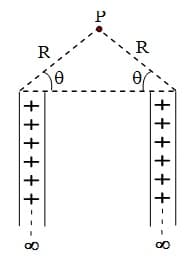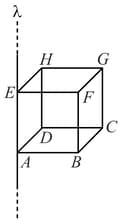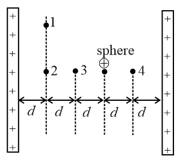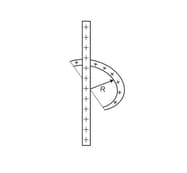Continuous Charge Distribution
Continuous Charge Distribution: Overview
This topic covers concepts such as Continuous Charge Distribution, Line Charge Distribution, Surface Charge Distribution, and Volume Charge Distribution.
Important Questions on Continuous Charge Distribution
A spherical conducting shell of inner radius and outer radius has a charge . A charge is placed at the centre of the shell.
What is the surface charge density on the (i) inner surface, (ii) outer surface of the shell?
Describe linear charge density. Write its SI unit.
What is volume charge density? Write its SI unit.
Describe linear charge density.
What is volume charge distribution?
Explain the term volume charge density. Write its SI unit.
Explain the term surface charge density. Write its Sl unit.
Find the total charge on a thin disc of radius , if its surface charge density varies with distance from centre as .
A straight infinitely long cylinder of radius is uniformly charged with a surface charge density . The cylinder serves as a source of electrons, with the velocity of the emitted electrons perpendicular to its surface. Electron velocity must be to ensure that electrons can move away, from the axis of the cylinder to a distance greater than .
A solid sphere of radius has a charge distributed in its volume with a charge density , where and are constants and is the distance from its centre. If the electric field at is times that at , find the value of .
Two metal spheres, one of radius and the other of radius , both have same surface charge density . If they are brought in contact and separated, then the new surface charge density on each of the sphere are respectively
Find the force experienced by the semicircular rod charged with a charge q, placed as shown in figure. Radius of the wire is R and the infinite line of charge with linear charge density is passing through its centre and perpendicular to the plane of rod.
A small element is cut from a circular ring of radius charge per unit length. The net electric field at the centre of ring is
Two infinitely long line charge of same linear charge density are arranged as shown in figure. The magnitude of electric field intensity at point as shown in figure -

An infinite long line charge of charge per unit length is passing one of the edge of a cube. Length of edge of the cube is . (see figure)

The figure shows two large, closely placed, parallel, nonconducting sheets with identical (positive) uniform surface charge densities, and a sphere with a uniform (positive) volume charge density. Four points marked as 1, 2, 3 and 4 are shown in the space in between. If are magnitude of net electric fields at these points respectively then:

A solid sphere of radius and volume charge density is enclosed by a hollow sphere of radius with negative surface charge density , such that the total charge in the system is zero, is a positive constant and r is the distance from the centre of the sphere. The ratio is
Charge distribution of a solid sphere, having radius and volume charge density, , is enclosed by a hollow sphere of radius with negative surface charge density such that the total charge in the system is zero. is a positive constant and is the distance from the centre of the sphere. The ratio is,
When a charge of amount is given to an isolated metal plate of surface area , its surface charge density becomes . When an isolated identical plate is brought closer to , the surface charge density on becomes . When is earthed, the surface charge density becomes . Then -
Two mutually perpendicular infinitely long lines of charge having charge per unit length as and are located in air at a distance from each other. The force of interaction between them is

